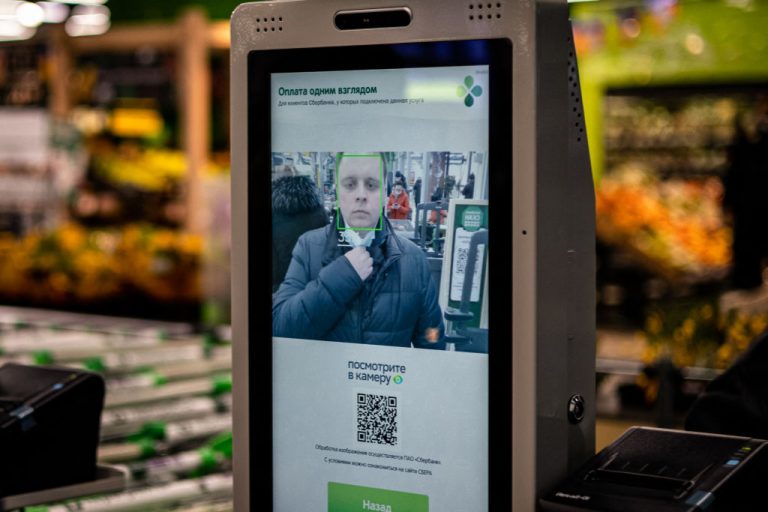Nine schools in Scotland’s North Ayrshire in the United Kingdom have deployed facial recognition payment systems in student cafeterias as of Oct. 18. The company supplying hardware and software for the roll out says the purpose is to speed up food delivery.
“In a secondary school you have around about a 25-minute period to serve potentially 1,000 pupils. So we need fast throughput at the point of sale,” David Swanston, CRB Cunninghams Managing Director told Financial Times.
FT says British schools “have used other biometric systems, such as fingerprint scanners, to take payments for years.” The outlet also said CRB claims their system is “more Covid-secure” than both card payments and fingerprint scanners.
The system stores an “encrypted faceprint template” locally at school servers to match pupils against its biometric database.
READ MORE:
- Pandemic Measures Increasing Youth Suicide Attempts, Distort Social Norms
- Chinese-Owned TikTok Will Now Collect Biometric Data on US Users
- Taliban Hunting NATO-Friendly Afghans With US Biometric Database and Hardware
Success
You are now signed up for our newsletter
Success
Check your email to complete sign up
In a sales promotional page on the company’s website, an employee demonstrated how the system works during a trade show held on Oct. 14. Students are presented with a food ordering kiosk that is equipped with a camera. The operator is able to demonstrate how quickly the machine matches a face against its database for the purposes of processing payment.
North Ayrshire’s Council were affirmative of the technology in comments to FT, “Pupils often forget their PINs and unfortunately some have also been the victim of PIN fraud, so they are supportive of the planned developments and appreciate the benefits to them.”
They claimed that 97 percent of either children or their parents had consented to the use of the technology, which must be opted in.
A Frequently Asked Questions sheet on the government’s website says that no other agencies can access the data, which is deleted when children graduate or move away from the school.
It also notes that as an alternative, students can pay for their meals through the use of a PIN.
Yet, in the government’s Privacy Notice Statement, it classifies biometric data as “Special Category Data,” which is expounded as “relating to the processing of personal data regarding racial/ethnic origin, political opinions, religious or philosophical beliefs, trade union membership, genetic data, biometric data, data concerning health or data concerning a person’s sex life or sexual orientation.”
It notes the legal basis for capturing this data is either “reasons of substantial public interest” or via consent.
The document notes data may be shared with the Scottish Government, external contractors, private nurseries, social workers, and the UK Information Commissioner, among others.
“Education will also make any disclosures required by law and may share information with other bodies responsible for detecting/preventing fraud or auditing/administering public funds,” reads the Notice.
It also states that the Council “will only keep an individual’s personal data for as long as necessary.”
“After this time personal data will be securely destroyed.”
In the About Biometrics section of a file titled Facial Recognition Parental Flyer also hosted on the Council’s website, effort is spent promoting biometric data capture based on precedent found in ancient history, “Biometrics are not new, their roots have been traced back to ancient Egyptian times. The use of finger images as a security device started with Chinese officials using them to seal documents in the second century BC.”
Facial recognition and other biometric technology are on the rise in the Commonwealth. In September, the NHS came under fire when it was revealed its vaccine passport app, which uses facial recognition to verify identities at the time of sign up, shares data with law enforcement agencies.
South Australia likewise began utilizing facial recognition for its COVID quarantine app used to enforce its 14-day quarantine rules. The government uses both geolocation and facial recognition at several randomized check-in notifications conducted each day. If a user fails to check in, they will receive a call from the government.
If the call goes unanswered, they will be visited by police.
In Canada, the federal government intends to deploy a full facial recognition system for all national passport holders by 2023. The Department of Citizenship said in a notice, “Applicants consent to their [passport] photos being used to confirm identity through the passport program’s facial recognition system.”
In June, Canada also announced it would create an Office of Biometrics and Identity Management. In a tender for bidding posted on the government’s website, it said the Office was intended to be created “in response to the COVID 19 situation and other operational priorities.”


















